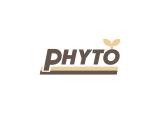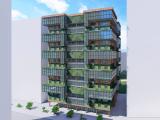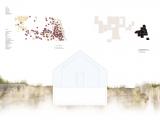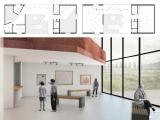

ARCH 613-614, 2012-2013
This project generates an alternative model of high-density development for emerging metropolitan areas that increases the intensity of use and overall density of a site while simultaneously producing new types of public open space. The example chosen here is Lincoln, NE. Focused intently on ways in which urban form influences or impacts a city’s consumption of energy and resources, the project can be understood as a formal approach to sustainability in which basic formal or tectonic properties are examined in favor of technological building systems. The project redefines the relationship between the park and the city, creating a network of public open spaces through the intensification of the city rather than the removal or diminishing of the urban fabric.
Ultimately, the initial goal of the project is to answer the following question: Can a careful reconsideration of the form of the city - i.e. the shape, spacing, and organization of its buildings, streets, and landscapes - effectively reduce the amount of energy and resources a city consumes while still creating an enjoyable and livable urban environment?
Cunningham Medal Winner
Follow the College of Architecture





